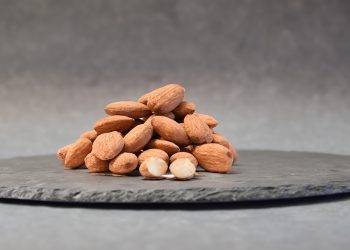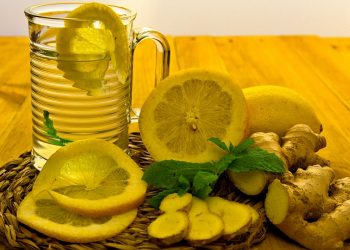A Ceviche diet—eating primarily fresh, citrus‑marinated seafood—has surged in popularity for its promise of lean protein, low calories, and vibrant flavors. In this article, you’ll discover seven compelling reasons why embracing a Ceviche diet for 30 days could jump‑start weight loss and elevate your overall health. We’ll unpack the nutritional science, practical tips, expert insights, and potential risks, so you can decide if this bold, seafood‑centric plan is right for you.
Contents
- What Is the Ceviche Diet and Why It’s Gaining Attention
- 1. Ultra‑Lean, High‑Quality Protein Source
- 2. Naturally Low in Calories and Carbohydrates
- 3. Rich in Essential Micronutrients
- 4. Promotes Satiety and Reduces Cravings
- Real‑Life Application: Sample Daily Ceviche Menu
- 5. Easy Meal Prep and Culinary Variety
- 6. Supported by Weight‑Loss Science—But With Cautions
- Balancing the Ceviche Diet Safely
- 7. Boosts Metabolic Health and Rings in the Benefits of Whole Foods
- The Bottom Line
- FAQs
What Is the Ceviche Diet and Why It’s Gaining Attention
The Ceviche diet revolves around consuming servings of raw fish or shellfish “cooked” in citrus juice—typically lime or lemon—alongside fresh vegetables and herbs. Proponents highlight its ultra‑lean protein, minimal saturated fat, and abundant micronutrients, framing it as both a delicious meal and a weight‑loss tool.
1. Ultra‑Lean, High‑Quality Protein Source
-
A typical cup of mixed seafood ceviche delivers roughly 155 calories, with 66% of those calories from protein—about 25.9 g per serving.
-
Protein’s thermic effect can boost metabolic rate, meaning you burn more calories digesting seafood than fats or carbs.
-
Sufficient protein intake preserves lean muscle during caloric deficits, supporting a toned, firm silhouette.
2. Naturally Low in Calories and Carbohydrates
-
A standard 1‑cup serving of ceviche clocks in under 200 calories and just 8.8 g net carbs, making it ideal for calorie‑controlled meal plans and low‑carb diets.
-
Unlike many trendy salads or bowls laden with dressings, ceviche’s citrus marinade contains virtually no fat, keeping calories low without sacrificing volume.
3. Rich in Essential Micronutrients
-
Seafood provides critical nutrients like omega‑3 fatty acids, vitamin D, iodine, and selenium, which support heart health, brain function, and thyroid balance.
-
The added lime juice contributes vitamin C, enhancing iron absorption and immune defense.
4. Promotes Satiety and Reduces Cravings
-
High‑protein meals trigger the release of satiety hormones (GLP‑1, PYY), helping you feel full longer and curb mid‑day snack attacks.
-
The acidity in citrus can slow gastric emptying, further prolonging fullness and stabilizing blood sugar levels.
Real‑Life Application: Sample Daily Ceviche Menu
-
Breakfast: Ceviche tostada with whole‑grain tortilla and sliced avocado.
-
Lunch: Spicy shrimp ceviche bowl with cucumber ribbons and radish.
-
Snack: Ceviche lettuce wraps.
-
Dinner: Mixed fish ceviche salad with baby greens and citrus vinaigrette.
5. Easy Meal Prep and Culinary Variety
-
Pre‑marinated ceviche can be batch‑prepared for 2–3 days, streamlining meal prep for busy lifestyles.
-
Swap fish types—tilapia, snapper, shrimp, tuna—to adjust flavor and nutrient profiles, preventing diet boredom and ensuring balanced nutrition.
6. Supported by Weight‑Loss Science—But With Cautions
-
Any diet creating a 200–500 calorie daily deficit can yield 1–2 lbs of weight loss per week.
-
Strict single‑food plans, however, can lead to nutrient gaps, metabolic slowdown, and unsustainable habits if followed too rigidly.
-
Experts warn against mono‑diets longer than a month due to risks of electrolyte imbalances, gallstones, and disordered eating behaviors.
Balancing the Ceviche Diet Safely
-
Incorporate multivitamin or targeted supplements (e.g., calcium, magnesium) to offset potential deficiencies.
-
Rotate in non‑seafood meals rich in whole grains, legumes, and dairy for at least one meal per week.
-
Stay hydrated and monitor sodium intake—ceviche can be high in salt from added seasonings.
7. Boosts Metabolic Health and Rings in the Benefits of Whole Foods
-
Diets rich in seafood are linked to improved insulin sensitivity and reduced inflammation.
-
Emphasizing whole, unprocessed ingredients aligns with clean‑eating principles proven to support weight maintenance and heart health.
The Bottom Line
Adopting a Ceviche diet for 30 days can spark significant calorie reduction, muscle‑sparing protein intake, and micronutrient richness—all key pillars of effective weight loss. Yet, to avoid the pitfalls of a single‑food craze, pair ceviche with mindful supplementation, meal rotation, and professional guidance. When executed responsibly, this vibrant seafood regimen may be the flavorful, sustainable reset you need to shed pounds and sculpt your healthiest self.
FAQs
Q: Can I lose weight eating only ceviche for 30 days?
A: Weight loss depends on total calorie intake versus expenditure. A strict ceviche plan under 1,200–1,500 kcal/day can produce a deficit, but long‑term single‑food diets carry health risks.
Q: Will eating raw seafood daily harm me?
A: Ensure high‑quality, sushi‑grade seafood and proper refrigeration. Limit raw intake to avoid foodborne illness, and include cooked meals periodically (FDA guidelines).
Q: How can I keep ceviche interesting over a month?
A: Vary seafood types (fish, shrimp, scallops), add different herbs, peppers, and citrus blends, and alternate side salads or steamed vegetables.
Stay bold, stay balanced, and remember: your body thrives on variety and nourishment. Embrace the Ceviche diet as one tool in your weight‑loss arsenal—and make every bite count! You’ve got this.
Get Your FREE Natural Health Guide!
Subscribe now and receive our exclusive ebook packed with natural health tips, practical wellness advice, and easy lifestyle changes — delivered straight to your inbox.
















